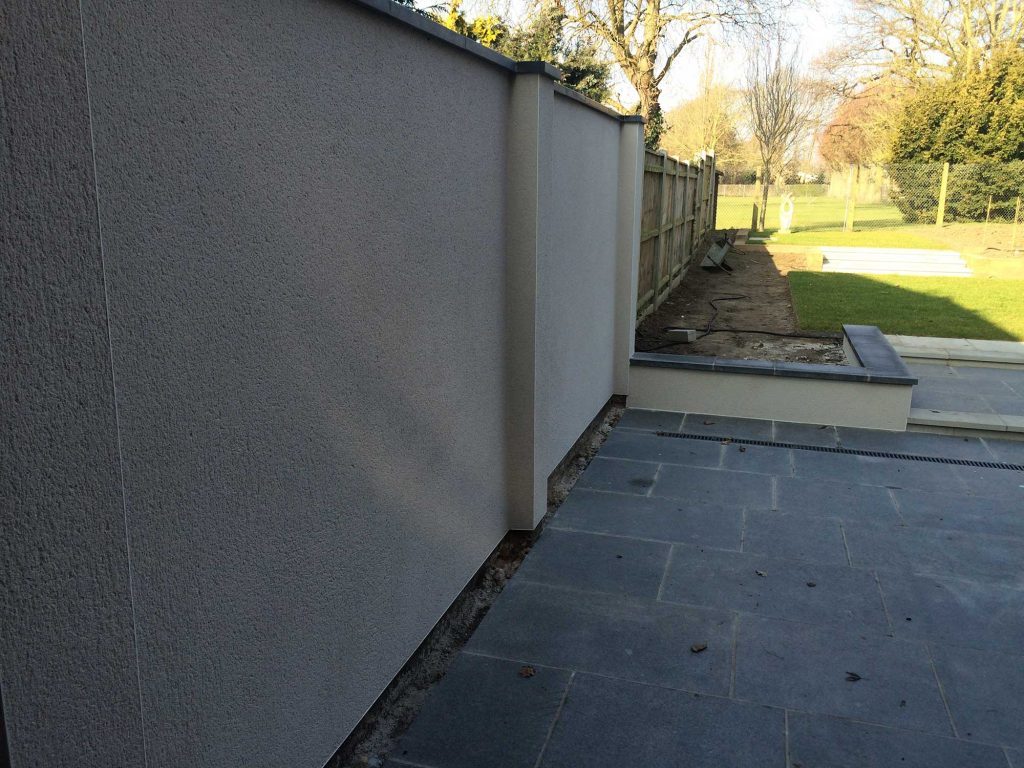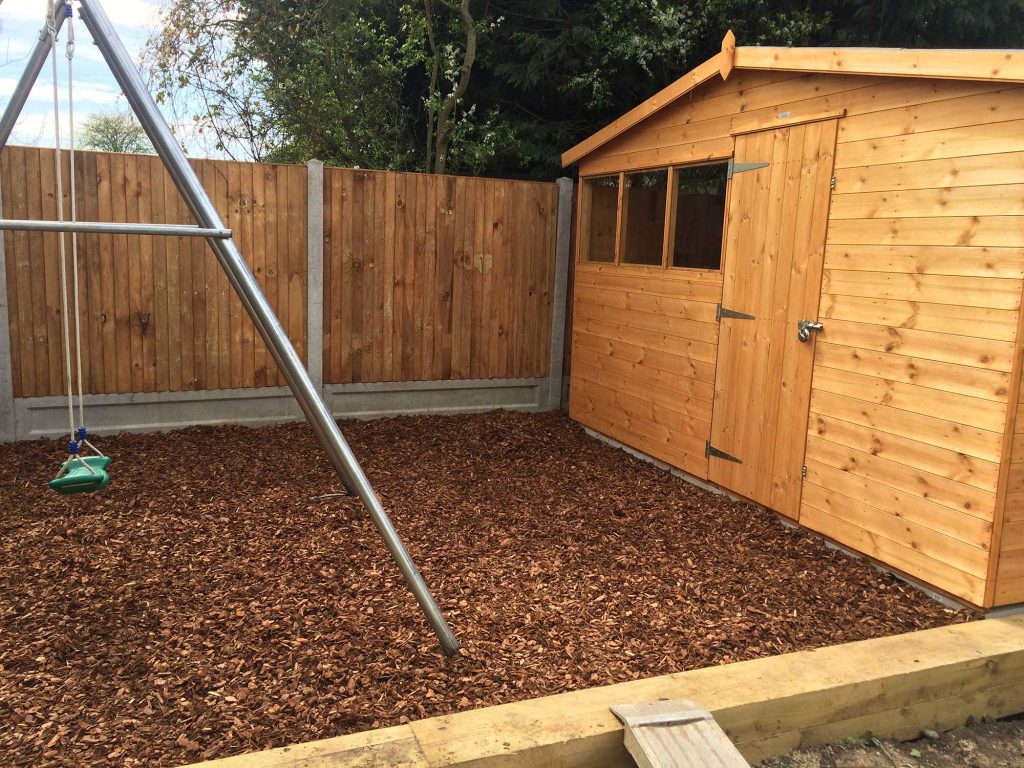07 Nov Do you need planning permission for domestic landscaping?
Every rose has its thorn. In this article we’re looking at planning permission and how to avoid having your landscaping project fall foul of local planning regulations.
It’s a common misconception that planning regulations only apply to buildings. Some changes to the grounds and gardens also need planning permission and/or subject to buildings control. Good garden designers and landscape contractors have an understanding of the rules and regulations and will help you to avoid problems. They’ll also be familiar with CDM regulations which come into play once work begins.
These are some examples where the council needs to approve your project. Please be aware though that it’s not a comprehensive list and that rules change from time to time. If in doubt check with your local planning department before starting a new landscaping project.
Paving your front garden
With parking space at a premium it’s little wonder that people want to use their front gardens as a driveway. At the time of writing, you don’t need planning permission to pave over your front garden provided that you the surface is porous. In other words, planners don’t want the drainage system to be overwhelmed by rainwater runoff. They want water to soak into the ground naturally.
An impermeable surface of 5 square metres or more needs planning permission. But that is easily overcome with a careful choice of materials.
There are plenty of hard landscaping solutions available. Resin bound driveways are attractive and, when properly laid, are water permeable. Likewise for stone setts or brickweave drives. The secret to permeability lies in the sub-base for the driveway (or patio).
More information on permeable surfaces from the RHS
Drainage and Utilities
You don’t normally need planning permission to work around manhole covers. However it’s always a good idea to find out who they belong to and who is responsible for their upkeep. Then seek consent before you start work.
Changes or additions to the drainage system do need prior approval under building regulations – and that applies to non-mains drainage too. There are also rules and guidelines from the Environment Agency to follow when working near septic tanks, cess pools, coastal defences, floodplains and watercourses.
Environment Agency regulations
Sheds and Summerhouses
If you want to put up small detached buildings such as a garden shed or summerhouse in your back garden, building regulations will not normally apply if the floor area of the building is less than 15m2 and contains NO sleeping accommodation.
If the floor area of the building is between 15m2 and 30m2, you will not normally be required to apply for building regulations approval providing that the building contains NO sleeping accommodation and is either at least one metre from any boundary or it is constructed of substantially non-combustible materials.
There are also regulations applying to the height of a shed or summerhouse, the distance from the property and the proportion of the garden it occupies. You will need to check with the planning department if you wish to put a building up in front of your house.
Most shed manufacturers are au fait with planning regulations and their buildings are usually compliant. However, it pays to familiarise yourself with any local rules and regulations. And if your home is a listed building you will probably need planning permission.
I would advise anyone to read the online planning portal very carefully before nipping down to the shed shop.
This online tool is awesome. (but remember that the rules are different for listed properties and for homes in designated areas. Plus they may vary between councils)
Decking
Something that is never mentioned on the garden makeover programs is that in certain circumstances, you do need approval from the council before installing decking.
Putting up decking, or other raised platforms, in your garden is permitted development providing:
- they are no more than 30cm above the ground
- together with other extensions, outbuildings etc, they cover no more than 50 per cent of the original garden area
Trees and Hedges
Some trees are protected by tree preservation orders which mean that you cannot prune or fell them without the council’s permission – not even if they are in poor health.
If you live in a conservation area or a listed building you also need to check with the council before doing any tree work.
Visit Colchester Borough Council website for up to date information on trees
You don’t normally need permission to plant a hedge in your garden and there are no laws to say how high you can grow your hedge. But you are responsible for looking after any hedge on your property and for making sure it is not a nuisance to anyone else. This means trimming the hedge regularly, both its top and all sides
If you are in any doubt about the status of the trees or hedgerows you plan to work on should contact your local council before you start.
Fences and Gates
In certain circumstances you will need to apply for planning permission if you wish to erect or add to a fence, wall or gate.
If the new fence (or wall) will be next to a path or road and over 1 metre high
or
Over 2 metres high if it’s anywhere else
On some developments, you will not be able to fence off your front garden (eg open plan housing estate)

Standard fence panels are slightly shorter than the 2 metres admissible under planning rules.
However if you are planning a wall or a non-standard fence, make sure you won’t be breaching any local regulations.
Outside Lights
Provided they are not messing with the structure of the building, it’s OK to install outdoor lights without planning permission. However, for the sake of neighbourliness, it’s a good idea to make sure you are not going to be upsetting or offending anyone.
Building regulations state that the work must either be carried out or certified by a registered competent person and completed to Part P regulation standards.
Landscaping for Listed buildings
The rules are completely different for listed buildings. In short, you must seek permission to do anything to change the appearance of a listed building or its grounds. You cannot put up a shed, dig a pond, install a patio or cut down a tree without prior approval. It’s frustrating but at the same time, I can understand why. Form filling is the price to pay for the privilege of being the custodian of a heritage house.
Landscaping with Planning Permission in mind
By far the quickest and simplest way to avoid problems with planning permission is to design and build your landscaping project around the rules. It’s something I’ve had plenty of practice at doing.
I always advise clients to
- Work with a garden designer who understands local rules and regulations
- Double check planning and building regulations for themselves
- Talk to the neighbours and warn them about possible disruption (not a planning requirement but it’s always good to keep the peace)
- Choose permeable surfaces wherever possible
- Be careful about the height of boundary walls or fences
- Incorporate existing trees into the new design (provided they are healthy!)
- Find an electrician who is certified as competent to install exterior electrics (if applicable)
- Make sure that your chosen landscape contractor complies with CDM regulations
Finally, planning permission and building regulations needn’t be a pain in the backside. They are there to protect you, the character of your neighbourhood and the environment in general. So try to stay positive and tailor your design so that you can enjoy every aspect of the design and build as well as the finished article.
Useful links
Planning Portal for England and Wales
CDM Regulations: your responsibilities
Recommended garden designer with planning knowledge





Sorry, the comment form is closed at this time.